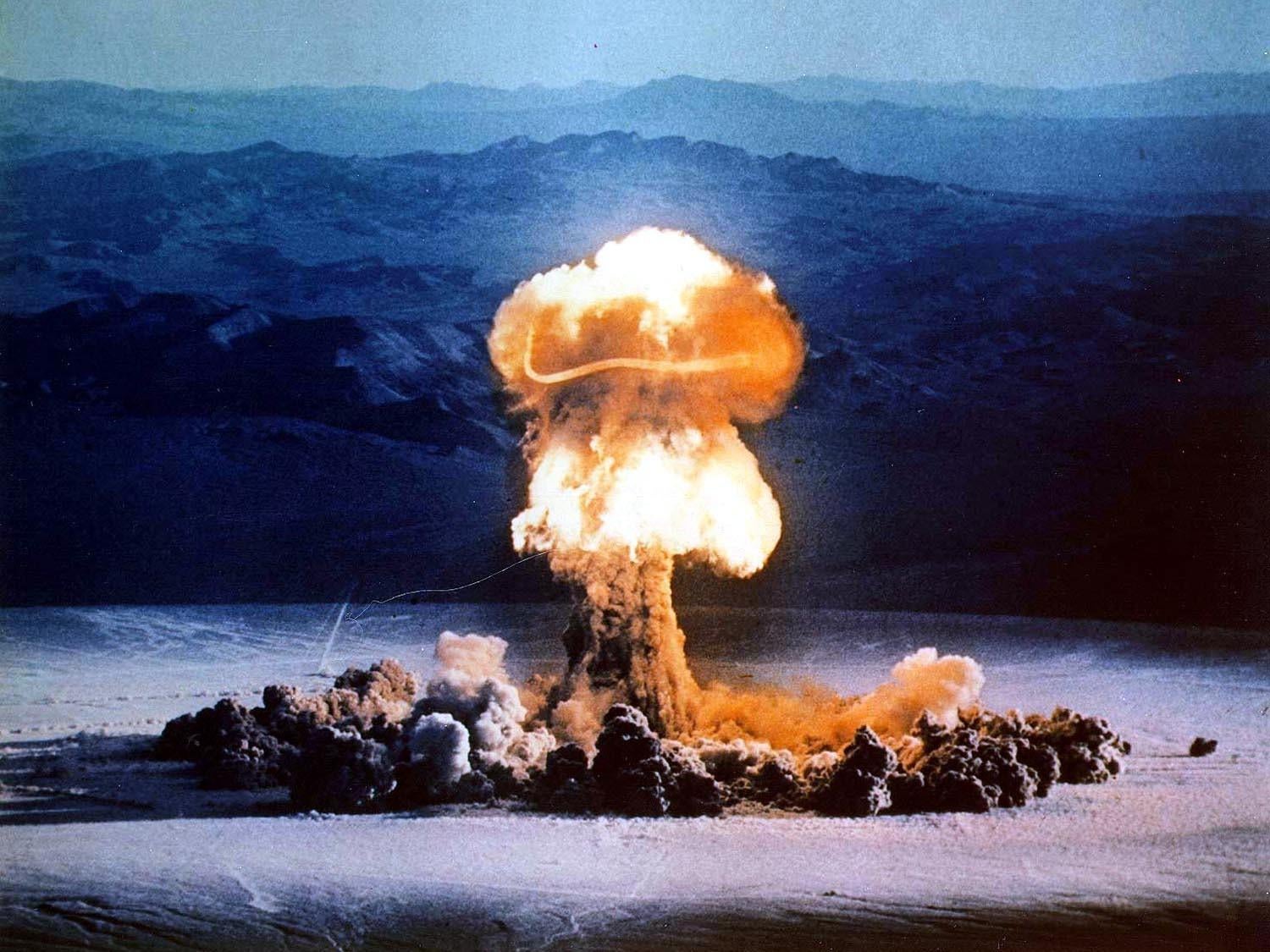President Donald Trump’s call for the United States to resume a nuclear testing program that was shuttered during the George HW Bush administration would require spending astronomical amounts of money for little benefit, according to experts.
Trump appeared to upend a three-decade moratorium on live nuclear explosions, which began following the last American weapons test in 1992, when he posted to Truth Social on Wednesday that he was ordering the “Department of War” — his administration’s preferred moniker for the Department of Defense — to “immediately” begin testing America’s nuclear stockpile “on an equal basis” to other nuclear-armed nations.
The move is ostensibly meant to counter modernized nuclear weapons delivery systems from Russia and China, as well as North Korea — which for years has conducted illegal nuclear tests at an underground facility.
Theoretically, the United States does have a facility capable of hosting and conducting underground nuclear weapons tests, the Energy Department’s Nevada Test Site, roughly 65 miles north of Las Vegas.
It’s there, deep under the Ranier Mesa, where the U.S. last exploded a nuclear warhead in 1992.

The site is the only place where any American nuclear tests had been run since 1962, the year before the Partial Nuclear Test Ban Treaty banned aboveground and underwater nuclear testing, as well as nuclear tests in space.
According to experts, resuming explosive tests at the Nevada site could be a byzantine and costly affair, particularly in light of the experience that has been lost since that last test more than three decades ago.
One such expert, former National Nuclear Security Administration acting principal deputy administrator Corey Hinderstein, said even a simple test consisting of setting off one warhead in an underground shaft could cost upwards of $100 million.
Hinderstein, who is head of the Carnegie Endowment for International Peace’s nuclear policy program told The Washington Post in an interview that a “new vertical shaft” would be necessary to avoid disrupting other work at the test site.
Paul Dickman, a retired senior policy fellow at the Argonne National Laboratory who spent almost 14 years at the NNSA — the agency that would be responsible for carrying out a live nuclear test — told the Post that the people who once worked on such projects were “not bureaucrats.”
Dickman, whose LinkedIn profile shows he worked on projects at the Nevada Test Site in the 1980s, said the officials in charge were “not a PowerPoint crowd” and “had a lot of dirt under their fingers.”
The NNSA has also seen an exodus of expertise from its ranks since the start of the second Trump administration, with many senior civil servants having been sacked during the Elon Musk-run Department of Government Efficiency’s rampage through the executive branch during the opening months of Trump’s term, with even more now on furlough during the ongoing government shutdown.
Nevada Representative Dina Titus, a Democrat, told the Post that the experts who’ve been fired or furloughed are “the people who build the weapons, who do the enrichment of the material, who test the existing stockpile.”
But former Obama administration energy secretary Ernest Mortiz said reaching Trump’s goal of an “immediate” return to testing is achievable so long as the only thing Trump desires is the explosion itself.
“If all you wanted was a stunt — to say okay, you set off a nuclear explosive, don’t worry about the data — you would probably take one of the weapons out of reserve, strip it down somewhat and then just set it off,” he said.
Moritz, a nuclear physicist and co-chair of the Nuclear Threat Initiative, added that the “stunt” test could be ready to go in “maybe a year.”
